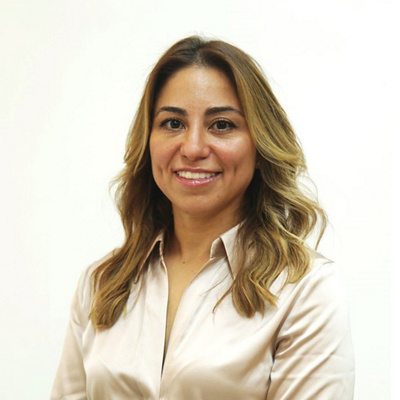Breast surgery is a procedure that requires modification to a woman or man’s breasts. Such surgeries are done for a variety of reasons. Some are done for cosmetic reasons, while others are medically necessary such as for breast cancer, non-cancerous breast lumps and breast reduction surgery to help get rid of back pain.
What makes our breast surgery team different?
- One stop solution, same day breast imaging appointment for urgent cases
- Triple assessments, applied for a suspicious breast lesion. The assessment is composed of clinical examination by the surgeon, mammogram and breast scan by the radiologist followed by ultrasound guided tissue biopsy taken from the suspicious lesion within 24-48 hours maximum
- Our surgeons are certified and expert in all procedures, including the latest oncoplastic breast surgeries
- Holistic support. We are very passionate about risk reduction and prevention measures, raising awareness, promoting healthy lifestyles, alternative and holistic supportive services
Breast cancer surgery
The surgical removal of a tumour from the breast is a fundamental part of breast cancer treatment. Where possible, the surgeon focuses on preserving breast tissue. If breast removal is necessary, it can be reconstructed with plastic surgery after this surgery. The various surgical treatment methods for breast cancer are explained below.
The optimum surgical treatment is determined in multi-disciplinary team meetings between gynaecologists, oncologists and surgeons. The individual needs of the patient play an important part in the process.
Breast-preserving surgery is usually an option for the majority of women. A breast amputation (mastectomy) is another alternative for the surgical treatment of breast cancer and it is the only surgical option for breast cancer risk reduction.
If the breast needs to be removed, there are different breast-reconstruction procedures.
Breast-conserving surgery in patients with breast cancer
During the breast-conserving surgery, only tumour tissue from the breast is usually removed. The affected lymph nodes near the tumour are also removed. Breast conserving surgery means saving your breast and removing only the affected area without causing significant or major shape changes. Radiotherapy is almost always required after this type of surgery.
What preparations are carried out before the procedure?
Different clarifications and examinations are undertaken before the procedure. The tumour is located precisely with medical imaging procedures such as mammography, ultrasound and MRI. A biopsy determines the type of cancer. Based on the examination results, the doctors then decide whether breast-preserving surgery is possible and whether chemotherapy should be carried out beforehand.
How is the operation carried out?
The location of the tumour in the breast determines where the incision is made in the skin. Then, the tumour tissue is removed from the breast. In the process, the surgeon operates with a safety margin of a few millimetres of healthy tissue. In this way, he or she can ensure that the tumour is completely removed.
When the lumpectomy requires a remodelling of the remaining gland, plastic surgery techniques can be used. The combination of the lumpectomy and breast plastic surgery is called ‘oncoplastic surgery’.
To achieve a good aesthetic result, it is essential that the remodelling is carried out during the lumpectomy because radiotherapy (which almost always follows a breast conserving treatment) 'freezes' the breast distortions and makes them more difficult to correct later on.
For lumpectomies requiring oncoplastic procedures, the scars vary depending on the location of the tumour, as well as the size and shape of the breast. Before surgery, the surgeon will have a consultation to explain.
What is the success rate of this procedure?
The success rates of any breast cancer surgery depends on the stage and type of the cancer. The recurrence rate during the breast-preserving surgery is not larger than after complete breast removal and the prognosis is not worse. The decision to undergo breast-preserving surgery is only made if the prospects of recovery are not impacted.
Types of lumpectomy procedures include:
Excisional biopsy: This is a procedure to remove a tumor for biopsy. Analysing the tumour in a lab can help determine if the tumour is cancerous (malignant).
Wide local excision: Surgery to remove a cancerous tumor and a margin of tissue around it. The marginal tissue will be tested afterward to make sure it’s cancer-free.
Quadrantectomy: A segmental mastectomy that removes about a quarter of your breast, including your duct-lobular system. Recommended when the tumour shows ductal spread.
Re-excision lumpectomy: A procedure that follows the original excision of the tumour and the margin of tissue around it. When the marginal tissue tests positive for cancer cells, your surgeon will reopen the surgical site to remove an additional margin of tissue until the tissue comes back cancer-free.
Mastectomy, breast amputation, breast removal
Mastectomy is the complete removal of the breast tissue.
It is required when breast-conserving surgery is not possible in view of widespread or malignant appearing calcification throughout the breast that are consistent with cancer, when the tumour is too large relative to the breast size and breast-conserving surgery does not provide a good cosmetic result, when the cancer is present in two different portions of the breast, when breast cancer is present in a pregnant woman in order to avoid radiotherapy which could bring an unacceptable risk to the unborn baby, when breast cancer reoccurs after breast conserving surgery and whole breast radiotherapy. It is also indicated for the treatment of breast cancer in men.
Sometimes patients may opt for mastectomy in order to avoid post surgery radiotherapy to the residual breast.
This procedure is also offered as a preventative measure to those
patients with genetic mutations that increase the risk of developing breast cancer in the future.
Types of mastectomy procedures include:
Total mastectomy: Removal of your entire breast, sparing your chest muscle beneath.
Double mastectomy: Removal of both breasts. This may be necessary if the cancer has already spread to both breasts, or it may be a preventative measure.
Skin-sparing or nipple-sparing mastectomy: Removal of all your breast tissue, but sparing your skin and, if possible, your nipple, to use to reconstruct your breast.
Modified radical mastectomy: Removal of your breast tissue and your underarm lymph nodes. Lymph nodes are often the first place that breast cancer spreads to.
Radical mastectomy: Removal of your breasts, underarm lymph nodes and chest muscles. This is a rare surgery, only necessary when breast cancer has infiltrated your chest muscles.
Lymph node investigation
Your lymph system is often the first place cancer spreads, and cancer in your lymph nodes is a warning sign that it may be spreading beyond your breast. To find out, your surgeon may remove and analyse one or several of the lymph nodes under your arm next to your affected breast. This is where breast cancer cells would be most likely to drain.
Lymph node procedures include:
Sentinel lymph node biopsy: This is an investigative procedure to find out if cancer has spread to your lymph system. The sentinel lymph node is a good indicator because it's the first node that filters fluid draining away from the affected breast. Your surgeon will often perform a sentinel node biopsy during the operation to remove the original tumour from your breast and analyse it for cancer cells, commonly during the same procedure.
Axillary lymph node dissection: If the sentinel node biopsy tests positive for cancer, or if cancer is still present in your lymph nodes after upfront chemotherapy, it is advisable to remove a larger portion of lymph nodes for further staging. In an axillary lymph node dissection, your surgeon removes a pad of fatty tissue containing a group of axillary lymph nodes (the lymph nodes under your arm).
Breast reconstruction
Breast reconstruction is a surgical procedure that restores shape and volume to your breast after mastectomy.
There are different types of breast reconstruction and these options should be discussed with your surgeon.
Your surgeon can rebuild the breast immediately following your lumpectomy or mastectomy (immediate reconstruction). This can also happen at a later time (months or years), such as after you've finished radiation therapy or chemotherapy treatment and your tissues had time to recover. Some people choose to have breast reconstruction after a mastectomy, but many don’t. The decision to have breast reconstruction is very personal.
Regardless of whether you have immediate or delayed reconstruction surgery, the breast reconstruction process usually requires two or more operations. Follow-up surgeries may adjust the size balance between your breasts, for example, adding a reconstructed nipple or symmetrising (reducing or increasing the volume) the other breast. Breast reconstruction can use a mix of different methods and can happen in stages. You and your surgeon will determine the right methods and timing based on your condition and preferences.
There are many breast reconstruction techniques. Some use silicone or saline breast implants. Other techniques use a flap of tissue from your body (such as tissue from the lower belly).
Breast reconstruction methods include:
Implant reconstruction: A breast implant replaces the tissue that was removed from your breast to restore its shape and volume. The implant is a silicone shell that’s filled with either saline or silicone gel. The surgeon places it over or under your muscle and covers it with your skin — either your original breast skin or a local pedicled skin flap from a contiguous area.
Autologous or “flap” reconstruction: This method takes tissue from another part of your body to reconstruct your breast. Skin, fat and sometimes muscle from areas such as your belly, back or buttocks tend to better resemble breast tissue in look and feel. Sometimes surgeons use a combination of flap and implant reconstruction for more realistic results.
Nipple reconstruction: Breast reconstruction may also include reconstruction of your nipple if this is sacrificed for an oncological reason, if you choose so.
3D nipple tattooing, to define the darker area of skin surrounding your nipple is also available if you don’t want to undergo another surgery.
Results
It is important to stress that breast reconstruction surgery offers many benefits but it will not make you feel or look as you did before the procedure. Keeping realistic expectations when predicting outcome of your surgery is highly recommended in order to have a smooth journey throughout the restorative process.
Specialized treatment Services:





